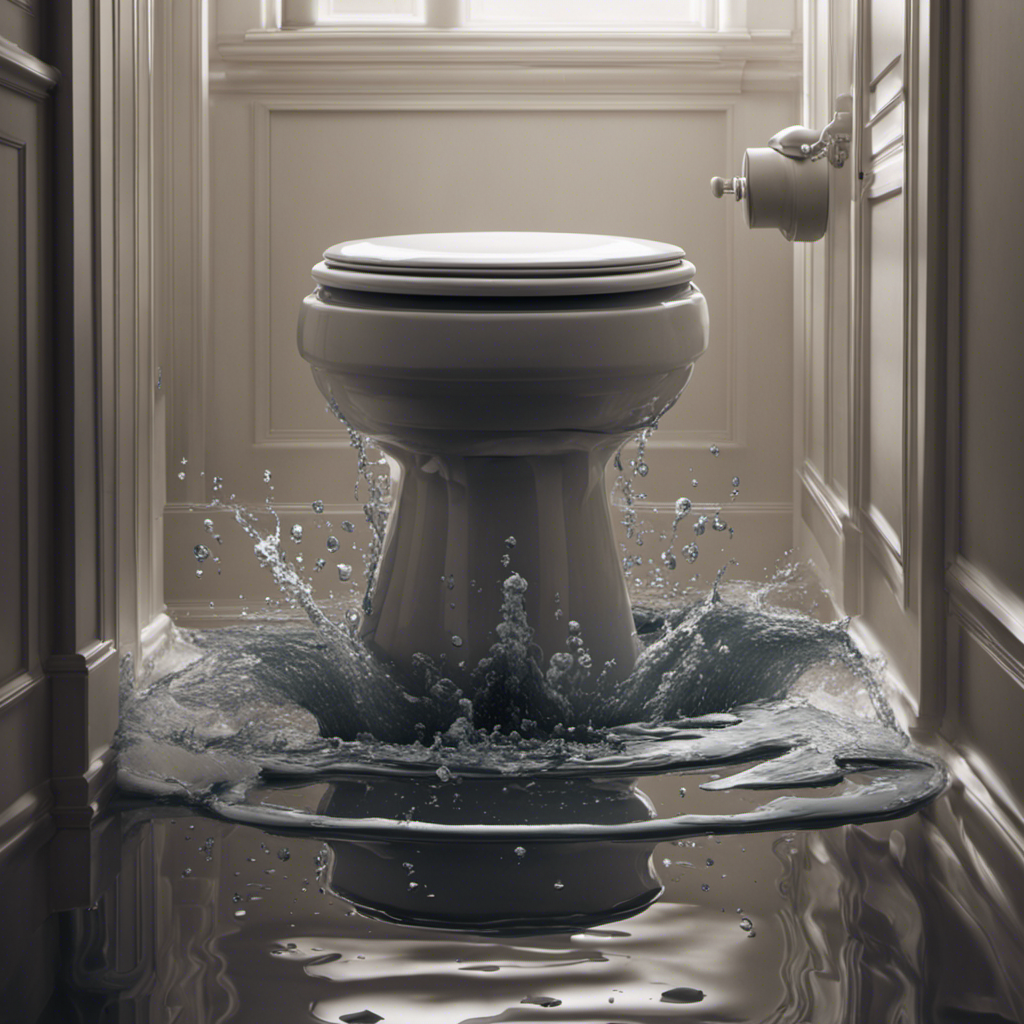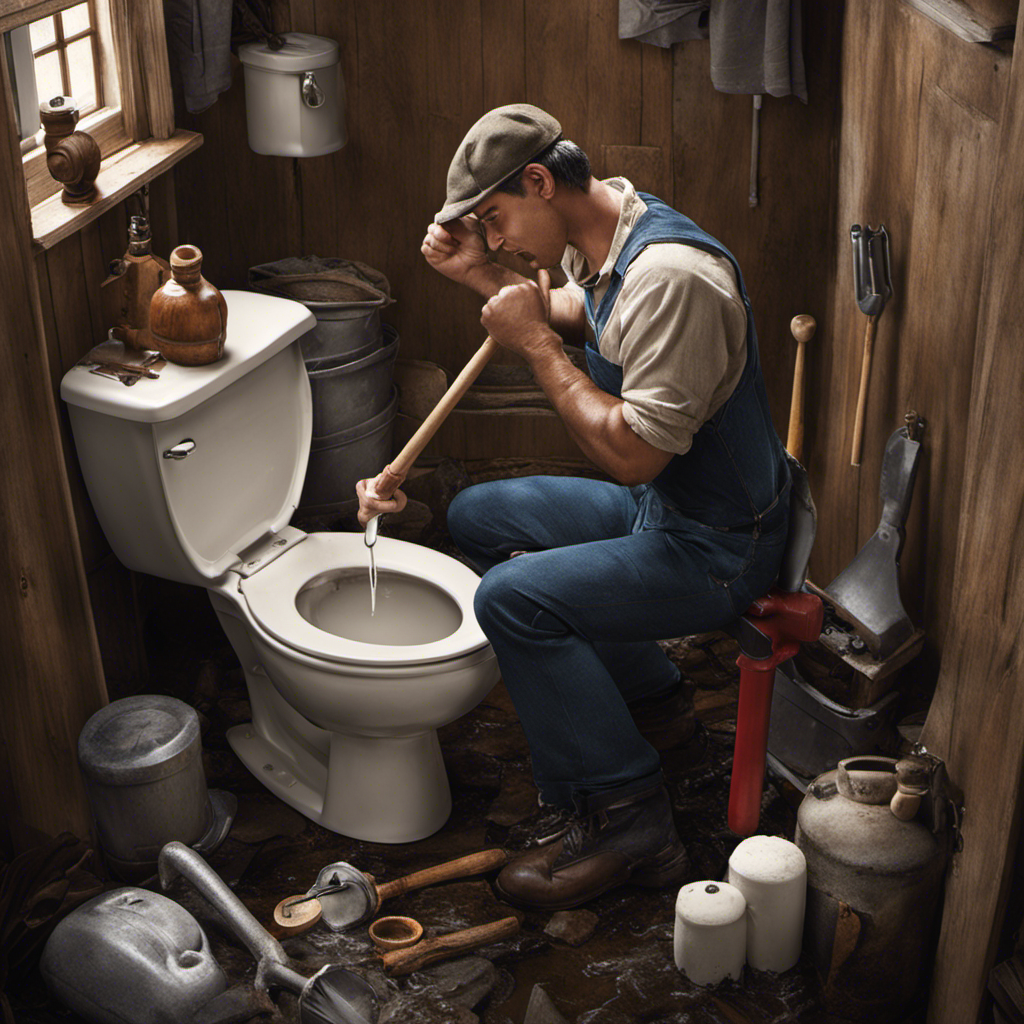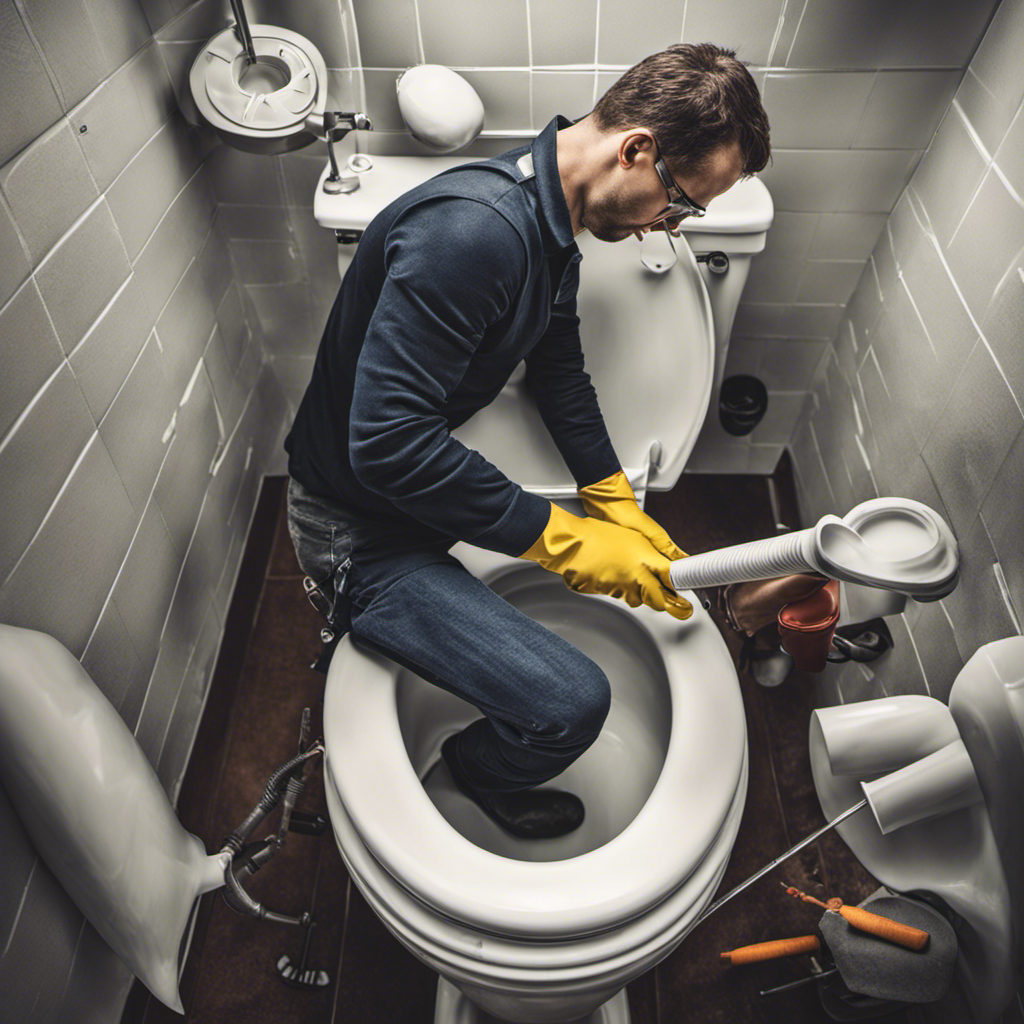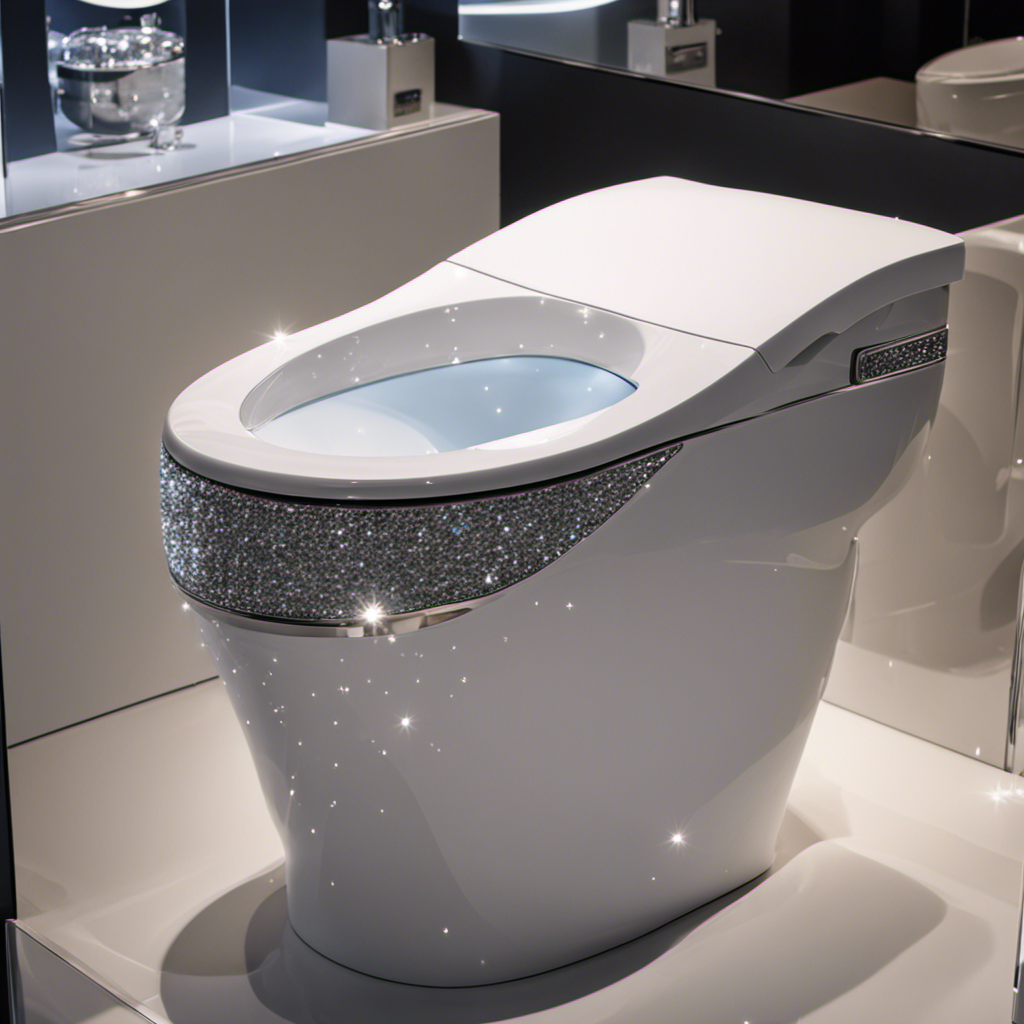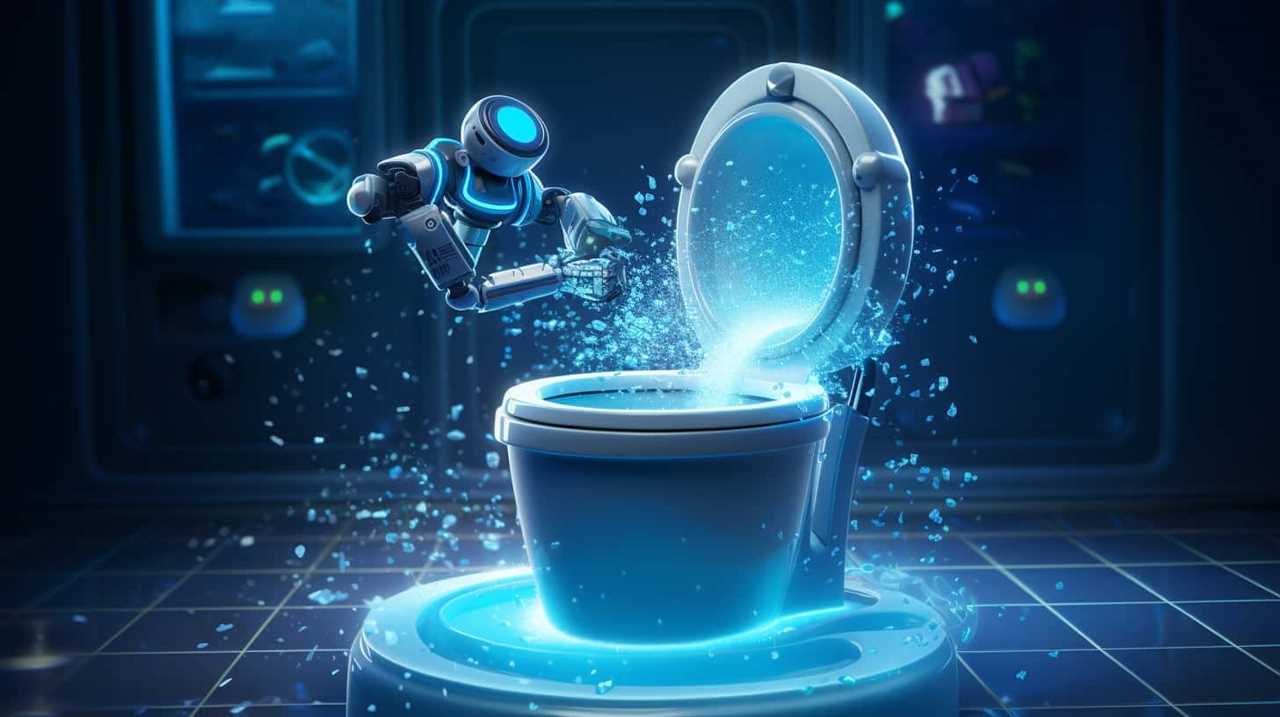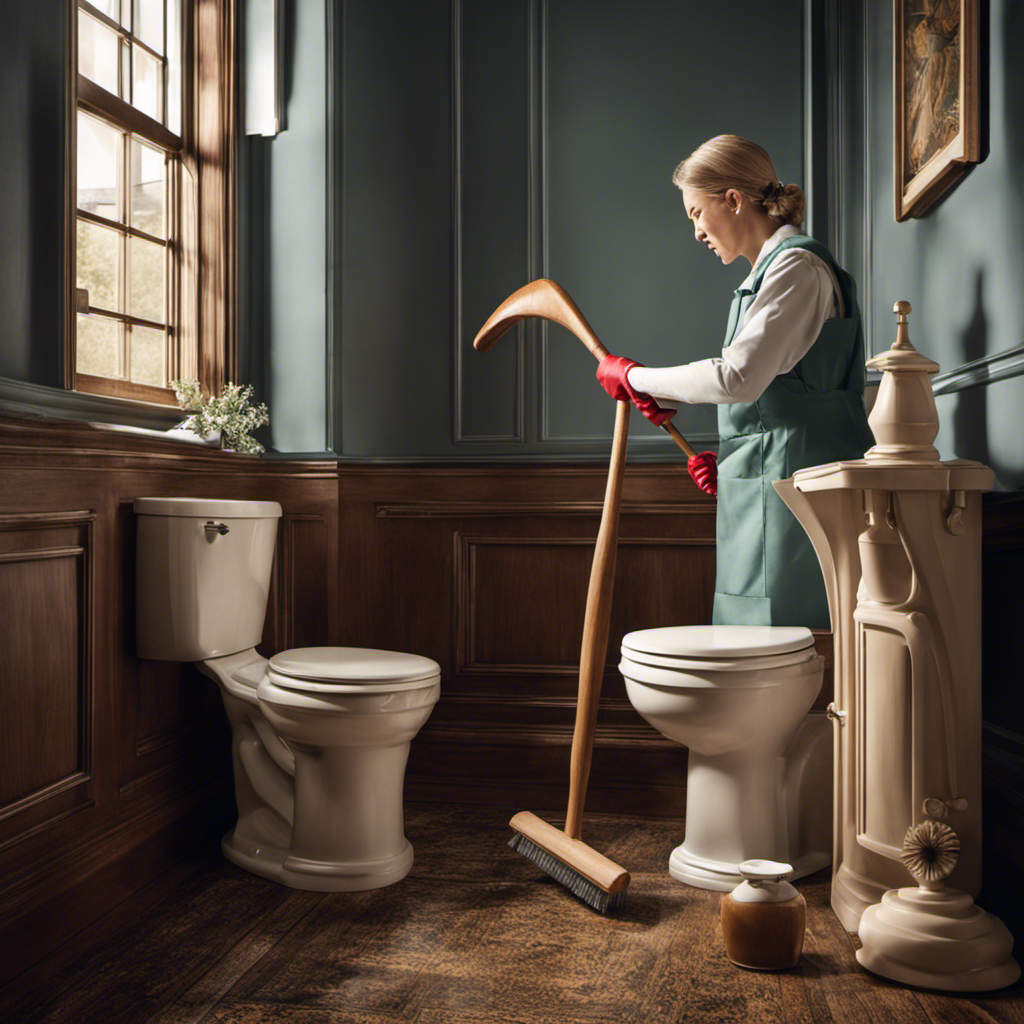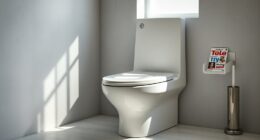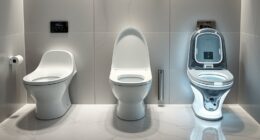When my toilet started overflowing, panic set in. Water gushed onto the bathroom floor, threatening to flood my entire house. In that moment, I realized I had no idea what to do.
But fear not, dear reader, for I have since become an expert in the art of handling toilet overflows. In this article, I will share with you the immediate steps to take, how to clear the clog, and how to prevent future disasters.
Get ready to tackle this messy situation head-on!
Key Takeaways
- The causes of a toilet overflow include flushing excessive toilet paper, flushing non-flushable items, buildup of mineral deposits or sediment in pipes, tree root infiltration in pipes, and lack of regular maintenance.
- When a toilet overflows, immediate steps to take include turning off the water supply to the toilet, assessing the situation and determining the best course of action, attempting to fix the issue using a plunger or plumbing snake, calling an emergency plumber if the problem persists or if unsure how to proceed, and minimizing water damage by acting quickly.
- To shut off the water supply to the toilet, locate the water shut-off valve behind or beside the toilet, turn the valve clockwise to shut off the water supply, and use pliers if the valve is hard to turn. Shutting off the water supply stops the toilet from overflowing and anyone can perform this practical solution.
- Clearing the clog in the toilet can be done using a plunger or a snake. A plunger creates suction and pressure to dislodge the blockage, while a snake is a long, flexible cable used to break up stubborn clogs. Hot water and dish soap, enzyme-based cleaners, and wet/dry vacuum are alternative options.
Causes of a Toilet Overflow
If your toilet is constantly overflowing, you might want to check if there’s a clog in the pipes. Toilet overflow prevention is essential to avoid messy and costly situations.
There are a few common causes of toilet clogs that you should be aware of. One of the most common causes is flushing excessive toilet paper or other items that are not meant to be flushed, such as feminine hygiene products or paper towels. Another cause can be a buildup of mineral deposits or sediment in the pipes, which can restrict the flow of water and lead to an overflow. Additionally, tree roots can infiltrate the pipes and cause blockages.
Understanding these common causes will help you take the necessary steps to prevent toilet overflows.
Now, let’s move on to the immediate steps to take when a toilet overflows.
Immediate Steps to Take When a Toilet Overflows
When a toilet starts overflowing, you should first turn off the water supply to prevent further damage. This is a crucial step in minimizing water damage and avoiding a messy situation.
Once the water supply is shut off, you can assess the situation and determine the best course of action. If you’re confident in your plumbing skills, you may attempt to fix the issue yourself by using a plunger or a plumbing snake.
However, if the problem persists or if you’re unsure how to proceed, it’s important to call an emergency plumber immediately. They have the expertise and tools to quickly resolve the issue and prevent any further damage to your home.
Shutting Off the Water Supply to the Toilet
To prevent further damage, it’s crucial to immediately shut off the water supply when a toilet starts overflowing. This simple action can help mitigate the risk of extensive water damage and save you from the hassle of calling an emergency plumber. Shutting off the water supply is a practical solution that anyone can do in case of a toilet overflow. Here’s a step-by-step guide on how to do it:
| Step | Instructions |
|---|---|
| 1 | Locate the water shut-off valve. It is usually located behind or beside the toilet. |
| 2 | Turn the valve clockwise to shut off the water supply. If the valve is hard to turn, use a pair of pliers to help you. |
| 3 | Once the water supply is shut off, the toilet will stop overflowing. |
Clearing the Clog in the Toilet
When it comes to clearing a clog in the toilet, one of the first decisions to make is whether to use a plunger or a snake.
Both tools can be effective in unclogging the toilet, but the choice depends on the severity of the clog and personal preference.
For minor clogs, a plunger is often sufficient and can be easily used by a DIYer.
However, for more stubborn clogs or if you’re unsure about handling the situation yourself, it may be wise to call a professional plumber who has the experience and tools to tackle the problem effectively.
Plunger or Snake
When faced with a clogged toilet, it’s important to have the right tools on hand. Here are some options to consider:
-
Plunger: This is a common and effective tool for clearing toilet clogs. It creates suction and pressure to dislodge the blockage.
-
Toilet Auger: Also known as a snake, this tool is used to break up and remove stubborn clogs. It consists of a long, flexible cable that can reach deep into the toilet drain.
-
Hot Water and Dish Soap: Sometimes, a simple solution of hot water and dish soap can help break down the clog and restore normal flow.
-
Enzyme-based Cleaners: These cleaners contain natural enzymes that help break down organic waste, making them effective for certain types of clogs.
-
Wet/Dry Vacuum: In some cases, a wet/dry vacuum can be used to suck out the obstruction from the toilet.
When deciding between using a plunger or a snake, consider the severity of the clog and your comfort level with each tool. If the clog persists or you’re unsure about using these tools, it may be time to consider calling a professional plumber.
DIY or Professional?
When it comes to dealing with a toilet overflow, one of the first decisions you have to make is whether to tackle the problem yourself or hire a professional.
Let’s consider the cost comparison between the two options. DIY solutions are typically cheaper, as you won’t have to pay for professional services. However, there are pros and cons to consider.
On the plus side, DIY solutions can save you money and give you a sense of accomplishment. But on the downside, if you’re not experienced or confident in your plumbing skills, you could potentially make the problem worse or even cause damage to your toilet or plumbing system.
It’s important to weigh the risks and benefits before deciding which route to take.
Now, let’s move on to the next step: cleaning up and sanitizing the overflowed area.
Cleaning up and Sanitizing the Overflowed Area
To properly clean up and sanitize the overflowed area, start by gathering the necessary cleaning supplies. Here’s what you’ll need:
-
Cleaning products: Use a multipurpose cleaner or a disinfectant specifically designed for bathroom surfaces. Look for products that are effective against bacteria and viruses.
-
Rubber gloves: Protect your hands from any potential contaminants by wearing rubber gloves.
-
Mop or towels: Absorb the water and clean the area using a mop or towels. Make sure to dispose of the towels properly after use.
-
Scrub brush: To remove any stubborn stains or residue, use a scrub brush with firm bristles.
-
Bleach or hydrogen peroxide: For effective disinfection, mix bleach or hydrogen peroxide with water according to the product instructions and use it to sanitize the area.
Remember to always follow the instructions on the cleaning products and take the necessary precautions to ensure your safety.
Preventing Future Toilet Overflows
To prevent future incidents, it’s essential to regularly maintain and inspect your plumbing system.
Proper toilet maintenance is crucial in avoiding potential overflows and minimizing water damage. Start by checking the water supply line for any leaks or cracks. Ensure that the fill valve and flapper are working correctly, as these components control the water flow.
Regularly clean the rim jets and siphon jets to prevent clogs and buildup. Avoid flushing non-flushable items such as wipes or feminine hygiene products, as these can cause blockages.
Additionally, maintain proper water pressure to prevent excessive force that could lead to overflowing. By following these simple steps and being proactive in your toilet maintenance, you can effectively prevent future toilet overflows and protect your home from water damage.
Conclusion
In conclusion, when faced with a toilet overflow, it’s crucial to act swiftly and confidently. By shutting off the water supply and clearing the clog, you can prevent further damage and chaos.
Remember to sanitize the area thoroughly, ensuring a clean and hygienic space.
And let’s not forget the importance of preventing future toilet overflows – because nobody wants to experience a flood of biblical proportions in their bathroom.
So, stay vigilant and keep your toilet in check to avoid a catastrophe of epic proportions!
